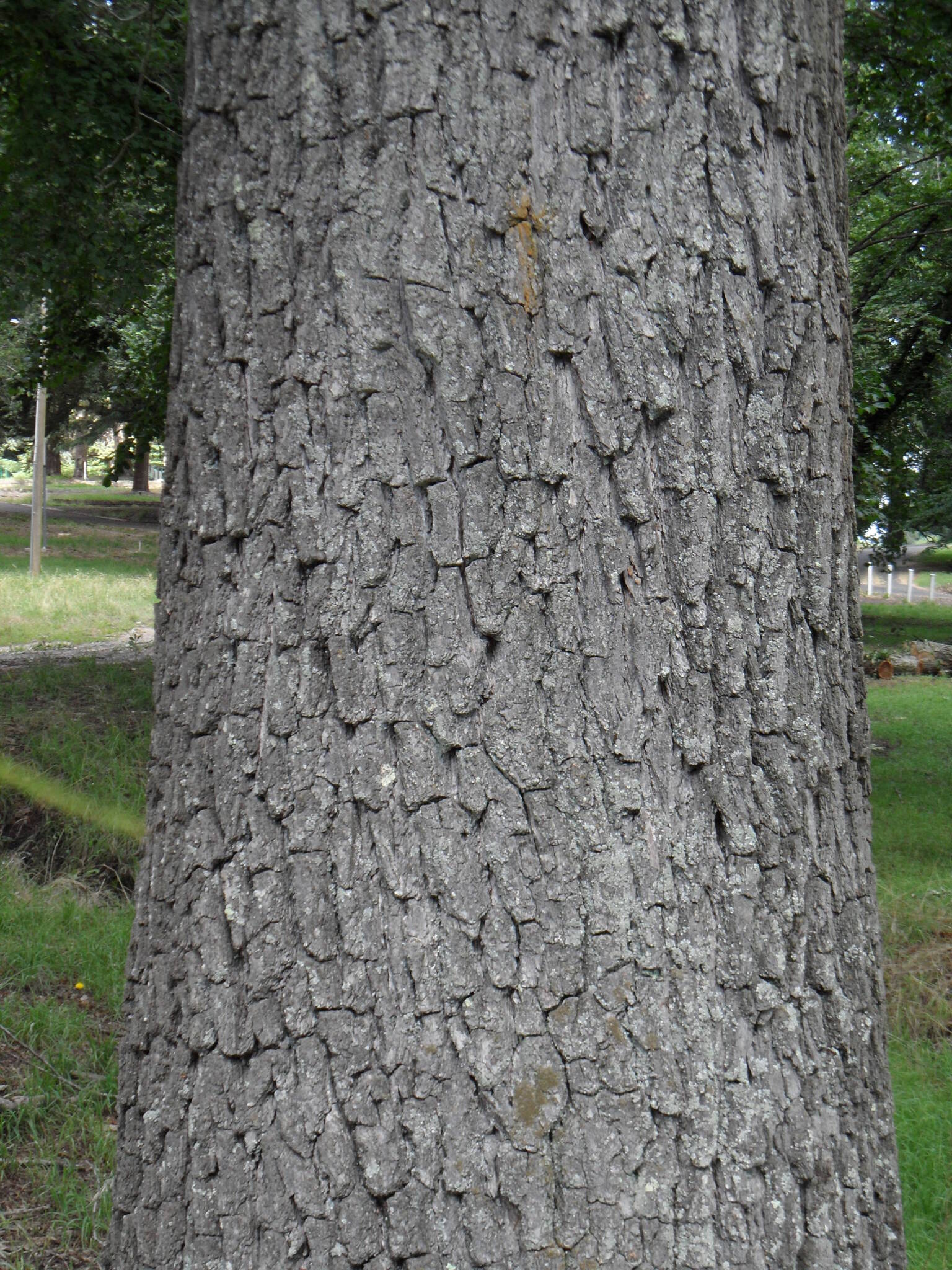
Large tree in the wild, in cultivation a small to medium evergreen tree to about 10 m tall, branching low down. Bark smooth at first, furrowed to almost black when old. Leaves tough and leathery, 2-4(-8) cm long, 2-7 cm wide, broad, dark green above, more or less hairless, occasionally with tufts of hair in vein axils below, rounded or heart-shaped at the base, tip pointed; margin generally toothed. Leaf stalks 1.5-2.5 cm long, hairy. Acorns 1-3 together, elongated and tapering to the tip, up to one third of the length enclosed in the cup; scales closely pressed down.
Coastal E North America & Mexico
Specimens in Victoria sometimes have smallish leaves without hair tufts in the vein axils below (possible hybrids). A coastal tree from northern California to Mexican Baja California growing naturally in valleys and on ranges to alt. 1000 m.
Leaves rounded, cartilaginous more or less toothed; acorn elongated.
NSW: Blue Mountains Botanic Garden Mount Tomah. ACT: Westbourne Woods and Heritage Nursery Yarralumla. VIC: Melbourne (Government House, rear drive; Royal Botanic Gardens Victoria (Melbourne Gardens), Oak Lawn); Kyneton (Kyneton Botanic Gardens, 2 trees, tallest 22 m tall in 1989); Hamilton (Hamilton Botanic Gardens, 2 trees); Riddells Creek (Old Smith's Nursery site, 3 trees).
Q. wislizenii A. DC. is similar and sometimes grown (Westbourne Woods, ACT); it also has pointed acorns but these project only about half way from the cup. Q. coccifera L. and Q. calliprinos Webb are also similar but these species have spreading, loose acorn cup scales.
Source: (1997). Fagaceae. In: . Horticultural Flora of South-eastern Australia. Volume 2. Flowering plants. Dicotyledons. Part 1. The identification of garden and cultivated plants. University of New South Wales Press.
